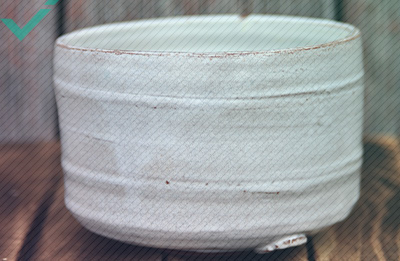ONOMATOPOEIAS AND HOW TO USE THEM
Onomatopoeia is one of those words that makes autocorrect worth its weight in gold. The onomatopoeia—on-uh-matta-pee-yuh—is more of a concept than an actual definition of something in language. It is simultaneously a newly created word and a word that phonetically represents the sound of the thing being described, while also being grammatically something else entirely and a curiosity at the root of language itself.
BOOM!! BOOM!! BOOM!!
Those percussive title rapports are an example of one type of onomatopoeia. Comic book enthusiasts are probably the most exposed to the onomatopoeia in this form. When a vividly rendered KAPOW! accompanies a punch, or a braking wheel is accompanied by a SCREEEEECH!, or when, in the same fashion, Roy Lichtenstein used the effects in his pop art—that’s onomatopoeia. In this way, the onomatopoeia denotes a word that is formed and pronounced in a way to imitate the sound it’s describing. Moo, sizzle, babble, and whoosh are all dictionary words that are onomatopoeias. They don’t necessarily have to be proper words; they can be invented for purpose just as well.
IF I COULD TALK TO THE ANIMALS
Onomatopoeia is virtually unavoidable when talking about animals: dogs bark or woof, cats miaow and purr, cows moo, chickens cluck, and bees buzz. Similarly, the machine world is replete with its own sounds that are mimicked into onomatopoeia. Car horns honk and beep, engines go vroom, and electricity goes zap.

CLASSICALLY SPEAKING GREEK
Strictly speaking, imitating sounds is the process of echo mimetics. If you were in Ancient Greece, you would know an onomatopoeia as a newly minted word—a word created with purpose, for a purpose. In the first contemporary instance, this meaning is still true, but there’s more to the onomatopoeia.
ONOMATO—POWER
Onomatopoeias, when used effectively, help bring writing to life by making the words themselves seem compelling. Ask any rapper. The power of the onomatopoeia in writing is that it stimulates another one of the senses in the reader. They are “written sounds” which help add gravity and depth to passages that might otherwise seem bland. If something slurps from an upturned bucket rather than simply drinking from it, the reader is invited to imagine the sound and probably the consistency of what is being described.
SLAVE TO THE RHYTHM
Q: When is an onomatopoeia not an onomatopoeia?
A: When it’s an onomatopoeia.
Rather than using “words for sounds” and instead using alliteration and consonance to bend the grammar flow, onomatopoeic effects can be created by the susurrations of rhythm, rhyme, repetition, and the pronunciation of whole sentences. These, especially when read aloud, have phonetic sounds that echo the theme of the subject matter being described. The morose poetry of Edgar Allan Poe gets the reader imagining soundscapes at every turn of the page. What is “And the silken sad uncertain rustling of each purple curtain” if not the sound of languidly rustling curtains?
AS FUNDAMENTAL AS SOUND
The onomatopoeia as a meta theme runs parallel to language in the realm of sound symbolism. Words are sounds to which we attach meaning, but onomatopoeia is mimicry of sounds that appear all around us. It is directly connected to its meaning without the need for abstract definitions. More fundamentally, in the structure of the English language, there is a large proportion of words that share a particular phoneme and also a similar meaning. This is the onomatopoeia as symbolic representation—in sound—of a fundamental response to an attribute of an object. As onomatopoeias became words and language, the fundamental preliterate connections got built in.

As mysterious examples yet to be explained by linguists or psychologists, things about the nose have a “sn” sound—snuffle, sneeze, and snot—while things that shine have a “gl” sound—glow, glimmer, and glitter. There is a cascade of similar associations throughout the language. This peculiarity isn’t across the board, but there is something in sound that prompts instinctual responses in people.
This quirk has even been observed experimentally. The father of insightful learning Wolfgang Köhler devised an experiment in 1929 which resulted in the discovery of the “bouba/kiki” effect. In the experiment, people who spoke different languages were shown two shapes, one of which was round and one spiky. They were then told that one is named “baluba” and one is named “takete”. There was a strong preference to call the spiky shape takete and the rounded shape baluba. This suggests the human brain attaches abstract sounds to shapes in consistent ways. The phenomenon has even been observed in children as young as two and a half.
THE ROOT OF ALL LANGUAGE
It is the belief of some linguists and psychologists that the onomatopoeia may have been the first form of human language—back in a time when our preliterate ancestors would mimic the sounds of the natural world around them. Then, as language and a richer form of communication developed, words retained their original sounds. In the contemporary Tamil language, the name for a crow is kaakaa, a word which is certainly a result of ancient sound mimicry.
GET ON THE ONOMATOPOEIA
If writers want to make a big SPLASH!, then using the onomatopoeia can be a way to lend their words impact and memorability. Whether as a new word, a description of a sound, or a grammatical structure, onomatopoeias enliven writing with soundscapes that amplify a reader’s experience. Just as a sniff that turns into a snide sneer has root onomatopoeic phonemes associated with the nose, there are alliterative sweet sentences using consonant stresses to spin imaginary soundscapes that support the sentence setting. Onomatopoeia isn’t a word used every day, but they are as everyday as writing and speaking. When utilised along with other literary devices like assonance, euphemism, or metaphor, a writer can produce exciting and memorable content.


